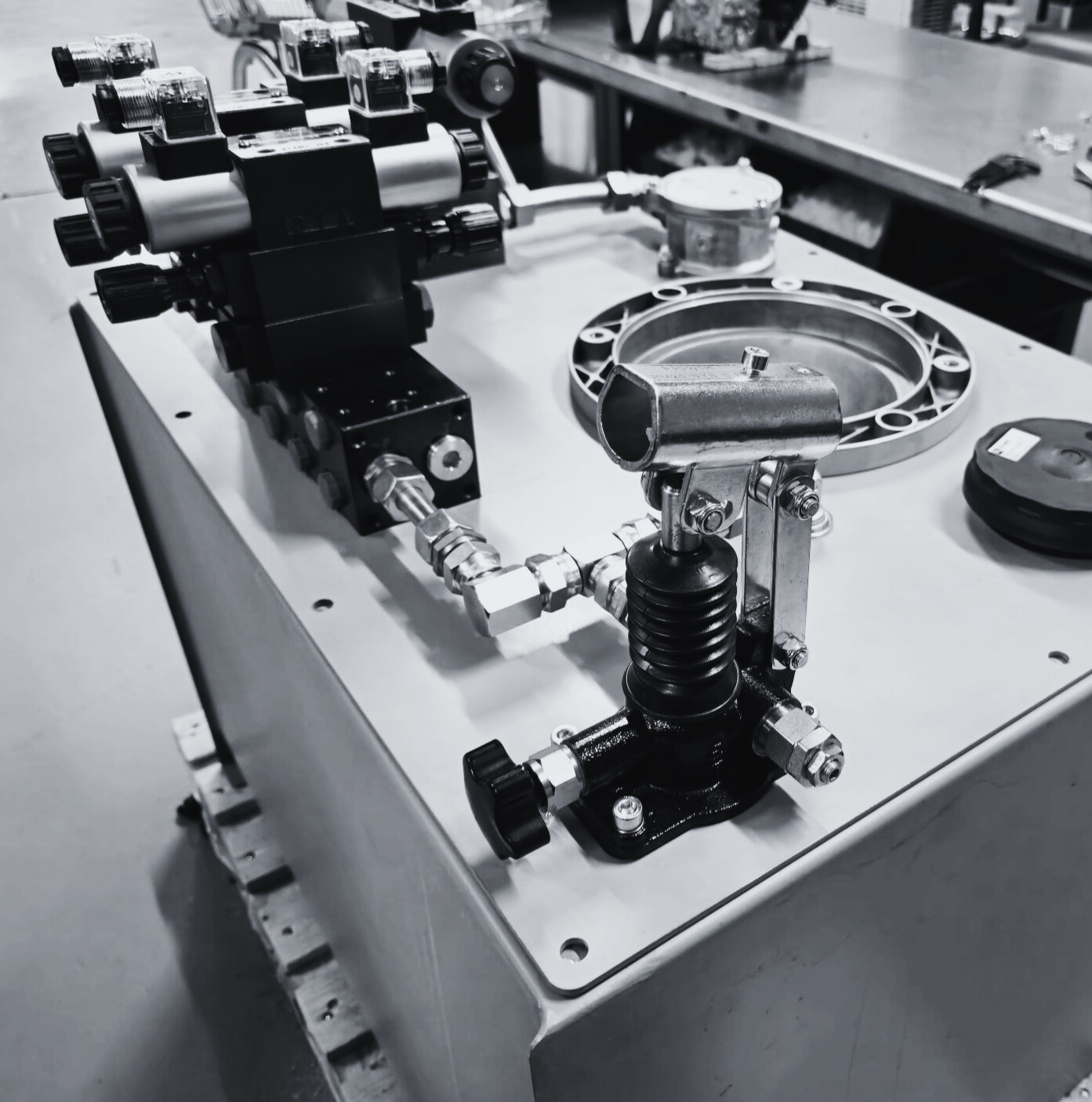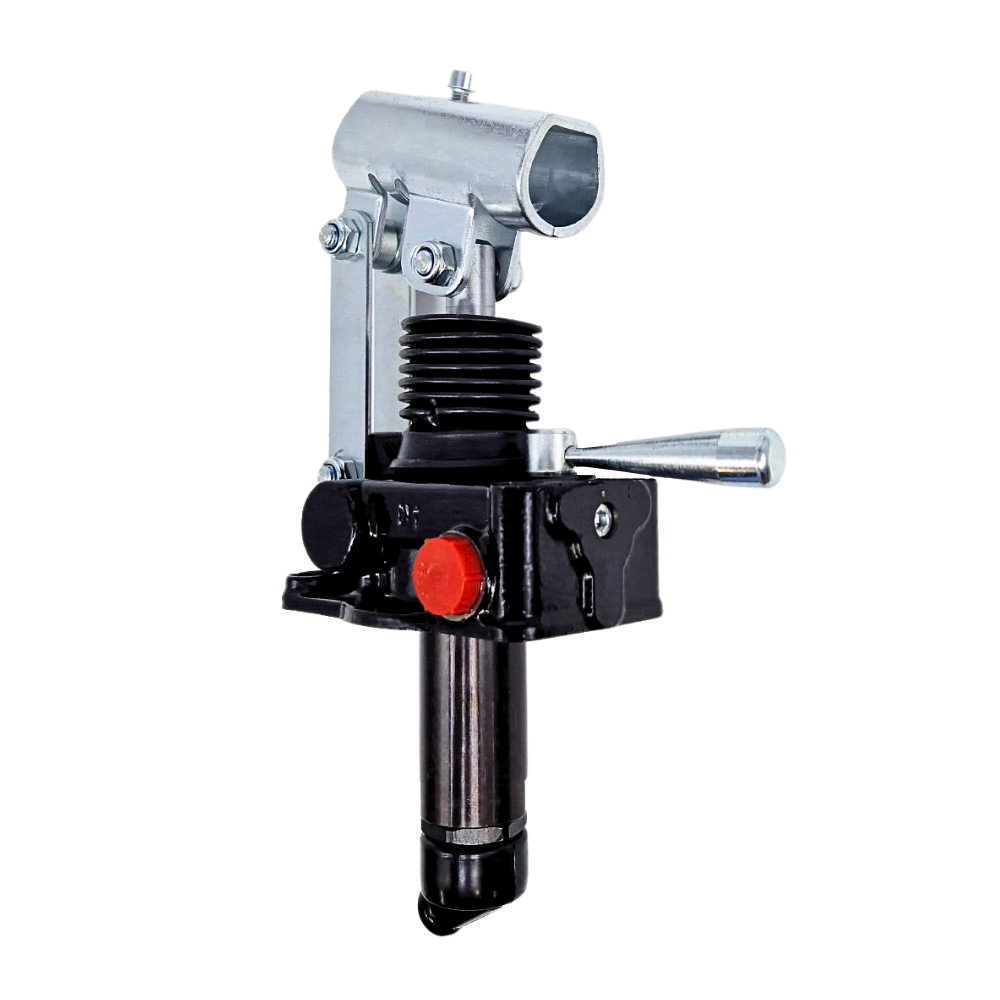Hydraulic Hand Pumps Explained: How They Work and Why You Need One
What is a hydraulic hand pump?
A hydraulic hand pump is a mechanical device that uses manual force to generate hydraulic pressure. It is commonly employed in various applications, such as lifting heavy loads, powering hydraulic systems, and performing maintenance tasks
How does a hydraulic hand pump work?
A hydraulic hand pump works by converting manual force into hydraulic pressure through the movement of a piston. This pressurized fluid can then be used to power various hydraulic systems or tools, making hydraulic hand pumps effective for lifting heavy loads and performing mechanical tasks without the need for external power sources.

What are the components of a hydraulic hand pump?
What are the main applications of hydraulic hand pumps?
Hydraulic hand pumps are versatile tools widely used in various industries and applications due to their ability to generate high pressure and perform significant work without the need for electricity or a power source. Here are some of the main applications of hydraulic hand pumps:
1. Automotive Repair and Maintenance
- Lifting Vehicles: Used in garages for lifting cars and trucks during repairs and maintenance.
- Powering Hydraulic Jacks: Often employed to operate hydraulic jacks for lifting heavy components.
2. Construction and Heavy Equipment
- Formwork and Concrete Lifting: Used to raise formwork or concrete slabs, facilitating construction processes.
- Operating Hydraulic Tools: Powers various hydraulic tools such as hammers, breakers, and drills.
3. Agriculture
- Powering Implements: Utilized to operate hydraulic equipment like seeders, plowers, and harvesters.
- Lifting Heavy Loads: Assists in lifting and positioning heavy agricultural equipment.
4. Manufacturing and Industrial Applications
- Pressing and Bending: Employed in manufacturing processes for pressing metal sheets or bending materials.
- Assembly Lines: Powers hydraulic systems for assembly line operations.
5. Aerospace
- Aircraft Maintenance: Used in the maintenance and assembly of aircraft, where precise lifting and positioning are crucial.
- Testing Hydraulic Systems: Can be used to test hydraulic systems in aircraft components.
6. Marine Applications
- Boat and Ship Maintenance: Used for lifting and servicing boats and ships, especially in dry docks.
- Operating Hydraulic Systems: Powers various hydraulic systems aboard vessels.
What types of hydraulic hand pumps are available?
1. Single-Acting Hand Pumps

- Function: These pumps generate hydraulic pressure on one side of the piston during the pump stroke and return to the starting position on the return stroke.
- Use: They are commonly used in applications where fluid needs to be moved in one direction, such as lifting or pushing.
2. Double-Acting Hand Pumps

- Function: Double-acting pumps create hydraulic pressure on both the forward and return strokes, allowing for more efficient operation and faster fluid movement.
- Use: These pumps are ideal for applications requiring rapid extension and retraction, such as in hydraulic cylinders.
Can hydraulic hand pumps be used for high-pressure applications?
Hydraulic hand pumps can effectively be used for high-pressure applications, provided they are appropriately rated and designed for such use. When selecting a pump, it’s crucial to consider the specific pressure and flow rate requirements of your application to ensure optimal performance and safety.
What are common accessories for hydraulic hand pumps?
Accessories for hydraulic hand pumps can significantly enhance their functionality and usability in various applications. Choosing the right accessories based on specific operational needs can ensure optimal performance and longevity of the hydraulic system.
- High Pressure Hoses: Designed to withstand the pressures generated by the hand pump, these hoses connect the pump to hydraulic cylinders or other devices.
- Hydraulic Cylinders: Single-Acting Cylinders used for pushing or lifting tasks, relying on hydraulic pressure for one-directional force. Double-Acting Cylinders allow for both lifting and lowering actions by applying pressure in both directions.
- Adaptors and Connectors: Facilitate easy connection and disconnection of hoses and equipment, allowing for quick setup and adjustments.
- Pressure Gauges: Help monitor the pressure within the hydraulic system, ensuring that the pump operates within safe limits.
- Inline Filters: Protect the hydraulic system by preventing contaminants from entering the fluid, which can prolong the life of the pump and connected components.
- Relief Valves: Prevent over-pressurization by allowing excess fluid to escape, protecting both the pump and the connected equipment.
What are the advantages of using hydraulic hand pumps over electric pumps?
Hydraulic hand pumps offer several advantages over electric pumps, making them a preferred choice in various applications.
Portability: Hydraulic hand pumps are typically lightweight and compact, allowing for easy transport to job sites or remote locations where electric power may not be available. They can operate anywhere without the need for electrical outlets or generators.
Simplicity of Use: Hand pumps are straightforward to operate, requiring minimal training or expertise.
Cost-Effectiveness: Hand pumps generally have a lower purchase price compared to electric pumps, making them an economical choice for many applications.
Reliability: Hand pumps are less likely to experience mechanical failures associated with electric components, making them more reliable in rugged environments.
Immediate Power: Hydraulic hand pumps can generate pressure quickly, providing immediate power for hydraulic applications without the delay of starting an electric motor.
Effective in Extreme Conditions: Hydraulic hand pumps are less affected by cold temperatures, as they do not rely on electrical components that may fail in low temperatures.
Diverse And Reliable Flowfit Hydraulic Handpumps
If you’re in search of dependable and tested hydraulic pumps that can be operated manually, look no further than the Flowfit hydraulic hand pumps we proudly provide.
Contact us today to speak with one of our hydraulic specialists and explore your options. You can also shop for hydraulic hand pumps directly through our website.
The total one-stop supplier for hydraulic components & systems
Get in touch
Parys Road
Ludlow
Shropshire
SY8 1XY








